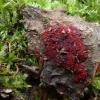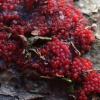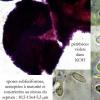
18-02-2022 18:04
 Bernard CLESSE
Bernard CLESSE
Bonsoir à toutes et tous,Pourriez-vous m'aider à

16-02-2022 20:58
 Rubén Martínez-Gil
Rubén Martínez-Gil
Hola a todos.Subo unas fotos de un asco que hemos

14-02-2022 14:00
William de JongHi everyone,Two weeks ago I found a Pestalotiopsis

16-02-2022 18:44
 Bernard CLESSE
Bernard CLESSE
Bonsoir à toutes et tous, Récemment j'ai trouv�

16-02-2022 09:48
Mirek GrycHello allMy experience in this topic is small so I

11-02-2022 13:53
Dragiša SavicHi to allI picked up a piece of wood in the forest

14-02-2022 15:37
me mandan el material de Galicia, recolectadas en

14-02-2022 14:14
William de JongHi everyone, A month ago I found these black bris



